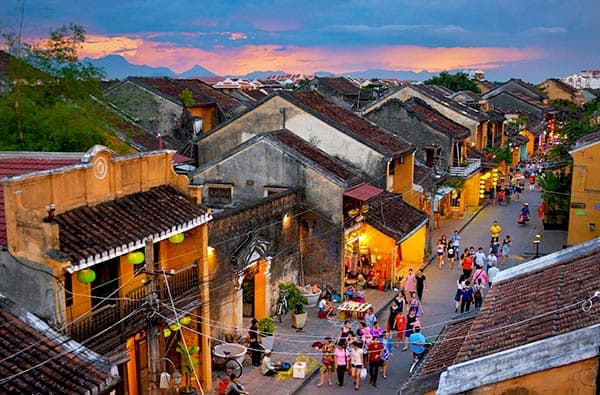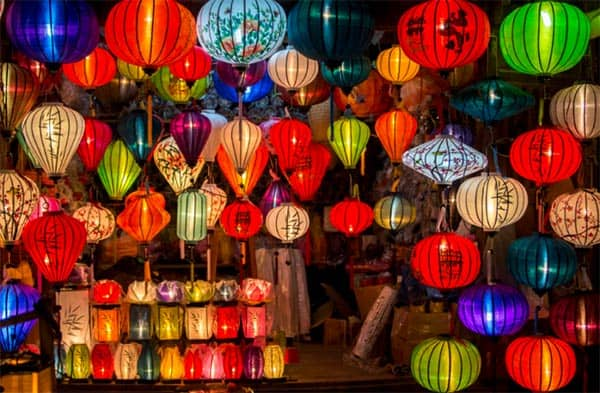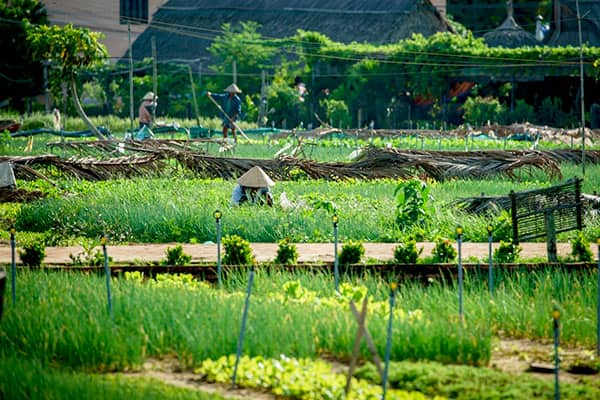HOI AN - CENTRAL VIETNAM
OLD TOWN OF CHARM
History of Hoi An
Beginning of the Hoi An story
The first owners of the region including Hoi An, in central Vietnam, were the Champa, a Malay-Indonesian people who arrived in Vietnam from Java around 200 BC. In the first century, the Champa founded Hoi An and called it "Lam Ap Pho" or the city of the kingdom of Champa.
The kingdom of Champa was large and powerful, and while My Son (which now exists only in the form of ruins) was the spiritual capital, Hoi An was the commercial centre. From the 7th to the 10th century, Hoi An, under the dominance of Champa, governed the trade in spices and silk, whose influence extended to Europe and the Middle East.
The decline of the kingdom of Champa
The Champa have often clashed with the Viet people north of their kingdom and the Khmer people in Cambodia. The fighting weakened the kingdom and in the 13th century, Kublai Khan, a Mongolian leader, invaded Champa. At the end of the 14th century, Che Bong Nga succeeded in unifying the Champa one last time and led a brief recovery. In the 15th century, finally, the kingdom collapsed and merged with Vietnamese territory.
Hoi An's return to the world stage
Under the leadership of the Nguyen dynasty, Hoi An gradually began to recover and regained its place. In the 16th and 18th centuries, Hoi An, which was called Hai Pho ("seaside town"), became the most important port in Southeast Asia. With a Japanese colony at one end of the city and an influx of Chinese, Dutch and Indian merchants, Hoi An was a world trade centre even before the existence of such a term. Nowadays, thanks to shipwreck excavations, we know that Vietnamese ceramics and other Asian countries have been taken from Hoi An to Sinai in Egypt!
The fall of the Nguyen lords
But Hoi An was destined to decline again. The Nguyen dynasty opposed open trade in order to limit the influence of foreigners in the country. The closed trade policy led to the stagnation of Hoi An and, by the time the Nguyen lords changed policy, Hoi An's decline was already irreversible.
French influence in Danang was rapidly increasing, making Danang the new centre of commerce in Vietnam. In addition, the new commercial ships built in the 18th and 19th centuries required a deeper port, which Hoi An could not offer.
Although Hoi An has ceased to be an important shopping centre, its decline has had its advantages. As other cities in Vietnam modernized during the 19th and 20th centuries, Hoi An was forgotten. It has allowed the continuation of its ancient traditions with little influence from the modern world dominated by Europeans.
Hoi An today
Due to its isolation, Hoi An has remained an unspoilt small town in central Vietnam. In 1999, UNESCO declared Hoi An a World Heritage Site, as a well-preserved example of an Asian trading port from the 15th to the 19th century. Thanks to UNESCO's recognition, tourists have made themselves known and the last decade has seen a revival of commercial activity in Hoi An, while world tourists are gradually rediscovering the charm of this old city.

The ancient streets of Hoi An
What to do in Hoi An
1. Old Town of Hoi An
The old town is the cultural and historical heart of Hoi An. Listed as a UNESCO World Heritage Site in 1999, the old town of Hoi An is home to a range of well-preserved houses that reflect a variety of architectural styles.
The old town of Hoi An is the ideal starting point for novice visitors. Most of the main tourist attractions and restaurants are located in this area.
What to see and what to do in the old town?
- Shops in the old houses
- The emblematic Japanese covered bridge (1593), which linked the Japanese and Chinese districts
- The superb architecture and decor of Quang Trieu's assembly hall
- Works by local artists in small galleries
- The animal statues that adorn Fukian's communal house, which dates back to 1697
- The former house of Phung Hung, one of the city's most famous architectural buildings, which combines Japanese, Chinese and Vietnamese architectural styles
- Tan Ky's old house, which has retained the same appearance as at the beginning of the 19th century
- Night walk in the old town illuminated by colourful lanterns
- Tasting of a banh mi Vietnamese sandwich at Madame Phuong's, one of the best street stands in the city
- Coffee or tea in an old house
- Dinner under the light of oil lamps on the banks of the Hoai River
- Lantern manufacturing course

The lanterns of Hoi An
- Custom-made clothing made by one of the famous tailors of Hoi An
- Sunset on the river.
- Bike ride along the river
- Tasting of specialities: cao lau (noodle....), com ga (rice cooked in chicken broth and turmeric, mixed with grated chicken, ground onion)
2. An Hoi
Opposite the historic centre of Hoi An, on the other side of the river, is the lively An Hoi district. On this island on the Thu Bon River, you will find a variety of charming buildings, colourful houses and superb cultural attractions.
An Hoi is also the place where the best nightlife in Hoi An takes place with vibrant lanterns that illuminate the streets.
What to do and what to see in An Hoi?
- The An Hoi Sculpture Garden, a 300-metre buffer strip covered with stone sculptures
- The candy and souvenir stands at the night market
- Bars overlooking the river
3. Cam Chau
Cam Chau is a beautiful and quiet neighbourhood located east of the city centre. It is an ideal starting point for travellers wishing to explore the natural coast of Hoi An, especially the rice fields and the countryside.
With its many restaurants, shops and cafés, this district is the place where you will find a good balance between urban amenities and a rural atmosphere.
What to see and what to do in Cam Chau?
- The Precious Heritage Art Gallery
- Scooter ride in the villages around Hoi An
- Day trip to the charming village of Tra Que, famous for its plants and vegetables
- Exploration of canals and waterways

Countryside in Hoi An
4. Cam Thanh
Cam Thanh is a charming village located east of Hoi An, along the river. Located between the beach and the city, this district is home to many rice fields, streams, rivers and other picturesque landscapes.
Cam Thanh is an ideal place for families. With its coconut and lush palm forests, this district offers many natural pleasures that will delight the youngest.
What to see and what to do in Cam Thanh?
- Thanh Man Fishermen's Village
- Bike ride on the quays and through the rice fields
- Day of relaxation in the sun on An Bang Beach
- Day as a Vietnamese peasant on a farm in Cam Thanh
- Family cooking classes
- Walk in a traditional bamboo boat
Some tips during your stay in Hoi An
- The purchase of tickets is mandatory for visits to certain places in the old city. A 120,000VND/person ticket allows access to 5 of the paying places which are generally old houses, temples,...
- During the full moon of each month, the city is illuminated with only lanterns in the street.
- Hoi An is a destination with its own identity, which makes it an essential part of a trip to Vietnam that crosses the Central part of the country.



